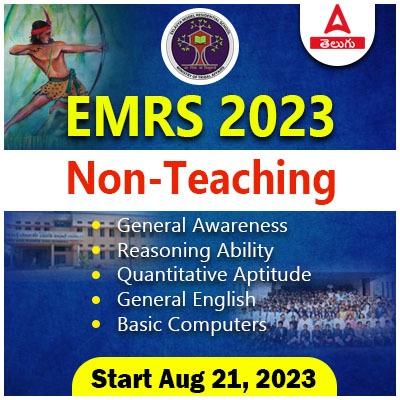Addapedia Editorial: Daily News Editorial PDF, 16 July 2024: Hello Aspirants ADDA 247 is back with Editorial Analysis in English. your daily source for in-depth news coverage and insightful editorial analysis. In this section, we bring you a comprehensive look at the latest national and international events, current affairs, and the historical context behind today’s most pressing topics. Our goal is to provide you with a well-rounded perspective on the news, helping you to understand not just the headlines, but the intricate details and background that shape the world we live in. This ADDAPEDIA Editorial Analysis will help you in understanding the National and International events Current affairs and the background of a particular topic. This comprehensive News analysis will help you in Clearing CA and Interview for many exams.
100 years of EEG
This year marks the centenary of the first human electroencephalography (EEG), produced by German physiologist Hans Berger.
What is the History of EEG invention?
- Berger’s feat was preceded by incremental but significant advances across Europe from the late 19th century.
- In 1875, British physician Richard Caton reported evidence of electrical activity in the brains of monkeys and rabbits.
- In 1890, his Polish peer Adolf Beck found evidence of fluctuating activity in the brains of dogs and rabbits when he stimulated their senses.
- In 1912, Vladimir Pravdich-Neminsky produced the first mammalian EEG, of a dog’s brain.
- Berger succeeded him in 1924 with the human counterpart. He is also credited with inventing the EEG, naming it, and introducing its utility in clinical settings.
What is an EEG and what are its applications?
- EEG stands for electroencephalography. ‘Electro’ pertains to electricity; ‘encephalo’ refers to the brain; and ‘graphy’ is a suffix meaning to show or to represent.
- Neurons in the brain perform various functions by moving electrically charged particles such as ions. The movement of these particles gives rise to electrical activity that a health worker can use an EEG test to visualise.
- Researchers have also been able to relate data obtained from an EEG with different levels and modes of brain activity, and used it to distinguish reliably between normal and abnormal states.
- EEG is not an uncommon diagnostic test in clinical settings. Among other applications, it is the reference standard — that is, the best test available — to diagnose epilepsy.
- An EEG test can also reveal the effects of anaesthesia, sleeping patterns, neurological activity during a coma, and availability of oxygen.
- EEG can also confirm brain death, one of the two legally recognised forms of death in India.
- In research, scientists use EEG for neuroscience, cognitive psychology, neurolinguistics, neuromarketing studies and to develop brain-computer interfaces.
How does an EEG test work?
- The neurons that make up the human brain are constantly exchanging atoms, molecules, proteins, etc. with their surroundings.
- Sometimes neurons will push ions out into the space between neurons. Since ions of the same charge repel each other, this ‘motion’ can push away other ions, which push away even other ions, and so on.
- When a large number of neurons start this cascade at the same time, a (relatively) big wave of electrical activity flows through the brain.
- The electrodes on the scalp are made of metal and track the changes in voltage as the waves move past them, creating an electroencephalogram.
What EEG shows?
- Brainwave patterns: EEG detects and records different types of brainwaves, which can be categorized as alpha, beta, delta, and theta waves. These patterns can vary depending on the person’s age, state of consciousness, and the presence of any underlying conditions.
- Abnormal brain activity: EEG can identify abnormal brainwave patterns associated with seizures, epilepsy, head injuries, brain tumors, sleep disorders, dementia, and other neurological disorders.
- Brain function: EEG can help assess the overall function of the brain, including its ability to process information and respond to stimuli.
- Changes in brain activity: EEG can monitor changes in brain activity over time, which can be useful in tracking the progression of a disease or the effectiveness of treatment.
What EEG doesn’t show?
- Structural abnormalities: EEG primarily measures electrical activity and cannot directly visualize the structure of the brain. For detecting structural abnormalities like tumors or lesions, other imaging techniques like MRI or CT scans are used.
- Thoughts and emotions: EEG measures electrical signals, not the content of thoughts or emotions. While certain patterns might be associated with specific mental states, EEG cannot directly interpret or decode thoughts or feelings.
- All neurological conditions: While EEG is useful for diagnosing many neurological conditions, it may not be able to detect all of them. Some conditions may not produce detectable changes in brainwave patterns.
- Specific causes of abnormalities: EEG can identify abnormal brainwave patterns but may not always pinpoint the exact cause. Further testing and evaluation may be necessary to determine the underlying cause of the abnormality.
Can you answer the following question?
Electroencephalography (EEG) is a valuable tool in neuroscience and clinical diagnosis. Discuss the principle behind EEG, its applications in diagnosing and its limitations.
‘Big brother’ to ‘Brother’, a Nepal-India reset
What are the key economic and strategic aspects of India-Nepal relations?
- Nepal is the seventh largest remittance-sending country to India
- Open border between the two countries facilitating free movement of people and serving as model for regional integration
- Nepal’s position as a buffer state along the Himalayan frontier. Reduces India’s military expenditure along a significant portion of its northern border
- Collaboration in regional forums like BIMSTEC and SAARC. Nepal’s strategic importance in India’s ‘Neighborhood First’ policy
- Nepal’s dependence on Indian ports for third-country trade
- Nepal’s vast hydropower resources are of strategic interest to India for its energy security.
- Shared cultural and religious heritage influencing bilateral relations. Significant Indian pilgrimage to Nepal and vice versa
What are the key issues affecting India-Nepal relations in recent years?
- Tensions since 2015 over Nepal’s new Constitution and India’s subsequent blockade
- Disputes over territorial claims (Limpiyadhura-Kalapani triangle)
- India’s perceived interference in Nepal’s internal politics and governance
- Concerns over Nepal’s growing relations with China
- Promotion of Hindutva ideology in Nepal
- Economic pressures and geopolitical coercion
- Disputes over hydropower projects and air routes
- Stalled implementation of the Eminent Persons’ Group (EPG) report
What suggestions are made for improving India-Nepal relations?
- India should adopt a hands-off policy towards Nepal’s internal affairs
- Nepal should assert itself more confidently in bilateral discussions
- Implement recommendations of the Eminent Persons’ Group report
- Revive the South Asian Association for Regional Cooperation (SAARC)
- India should recognize Nepal’s non-negotiable friendship with China
- Develop ‘Nepal studies’ as an academic discipline in India to improve understanding
- Convert India’s ‘big brother’ approach to a more equal partnership
Can you answer the following question?
India-Nepal relations have faced several challenges in recent years. Elaborating on these challenges, suggest a roadmap for fostering a more balanced and mutually beneficial partnership between the two nations.
Download Daily News Editorial PDF
| Adda247 Telugu Home page | Click here |
| Adda247 Telugu APP | Click Here |












